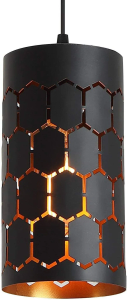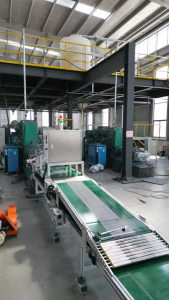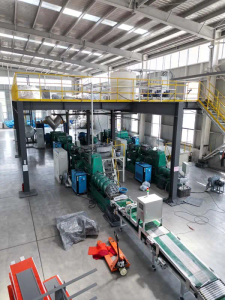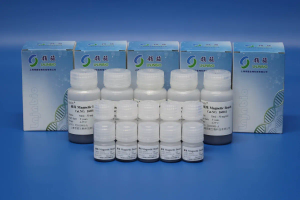Silicon carbide in new energy generation applications and future trends
Silicon Carbide in New Energy Generation Applications and Future Trends
Silicon carbide (SiC) has emerged as a critical material in the realm of new energy generation, demonstrating unparalleled potential across various applications. This article explores the multifaceted roles of SiC in revolutionizing energy technologies, its current applications, and the promising future trends that harness its capabilities.
Introduction to Silicon Carbide
Silicon carbide, a compound of silicon and carbon with chemical formula SiC, stands out as a pivotal material in modern technology, particularly in energy generation and conversion. Known for its exceptional properties, including high thermal conductivity, superior chemical resistance, and robust mechanical strength, SiC has garnered significant attention from researchers, engineers, and industries worldwide.
Properties and Advantages of Silicon Carbide
![]()
1. High Thermal Conductivity
One of the standout features of SiC is its high thermal conductivity, significantly surpassing that of conventional semiconductors like silicon. This property makes SiC ideal for applications where efficient heat dissipation is crucial, such as in power electronics and high-power devices.
2. Wide Bandgap
SiC possesses a wide bandgap, typically ranging from 2.3 eV to 3.3 eV depending on the polytype. This characteristic formula for silicon carbide enables SiC-based devices to operate at higher temperatures and voltages compared to silicon devices, leading to enhanced performance and reliability in demanding environments.
3. Mechanical Strength and Durability
With a high hardness and excellent mechanical stability, SiC exhibits superior durability under harsh conditions. This property is advantageous in applications requiring robust materials capable of withstanding extreme temperatures, corrosive environments, and mechanical stress.
Applications of Silicon Carbide in New Energy Generation
1. Power Electronics
SiC-based power electronic devices have revolutionized energy conversion systems by enabling higher efficiency and reduced energy losses. Devices such as SiC metal-oxide-semiconductor field-effect transistors (MOSFETs) and Schottky diodes offer lower switching losses and higher switching frequencies, making them ideal for power supplies, inverters, and electric vehicle (EV) chargers.
2. Renewable Energy Integration
The integration of SiC devices in renewable energy systems, such as solar inverters and wind turbines, enhances energy conversion efficiency and grid stability. SiC’s ability to operate at elevated temperatures improves system reliability and reduces cooling requirements, contributing to the overall cost-effectiveness of renewable energy installations.
3. Electric Vehicles (EVs)
The automotive industry has embraced SiC technology to advance the performance and efficiency of electric and hybrid vehicles. SiC-based power modules enable faster charging, longer driving ranges, and lighter vehicle designs due to reduced thermal management needs. This translates into improved battery life and enhanced driving experience for EV users.
Future Trends and Innovations
1. SiC Device Miniaturization
Ongoing research focuses on further miniaturizing SiC devices to enhance power density and integration capabilities. Advances in device packaging and manufacturing techniques aim to reduce size and weight while maintaining or improving performance metrics, paving the way for compact and efficient power solutions.
2. Enhanced Material Quality
Continuous improvement in SiC crystal growth techniques, such as epitaxial growth and doping control, aims to enhance material quality and uniformity. High-quality SiC substrates with reduced defects and enhanced carrier mobility are crucial for achieving higher yields and reliability in mass production.
3. Expansion into Emerging Markets
The adoption of SiC technology is expanding beyond traditional markets into emerging sectors such as aerospace, telecommunications, and medical devices. These industries benefit from SiC’s unique combination of high-performance capabilities and reliability, driving innovation and competitiveness in diverse applications.
Challenges and Considerations
1. Cost Considerations
Although SiC offers compelling advantages, including energy efficiency and performance improvements, the initial cost of SiC-based devices remains higher than that of silicon counterparts. Efforts to reduce manufacturing costs through economies of scale and process optimization are essential to accelerate widespread adoption across industries.
2. Standardization and Integration
The standardization of SiC device specifications and compatibility with existing infrastructure are critical for seamless integration into various applications. Collaboration among industry stakeholders, regulatory bodies, and research institutions is essential to establish melting temperature of silicon carbide guidelines and protocols that promote interoperability and reliability.
Silicon carbide continues to redefine possibilities in new energy generation applications, leveraging its unique properties to enhance efficiency, reliability, and sustainability across diverse industries. As research advances and manufacturing capabilities evolve, SiC is poised to play an increasingly integral role in shaping the future of energy technology. Embracing innovation and collaboration will drive the continued development and adoption of SiC-based solutions, ushering in a new era of energy generation and consumption.
https://oaicon.com/




